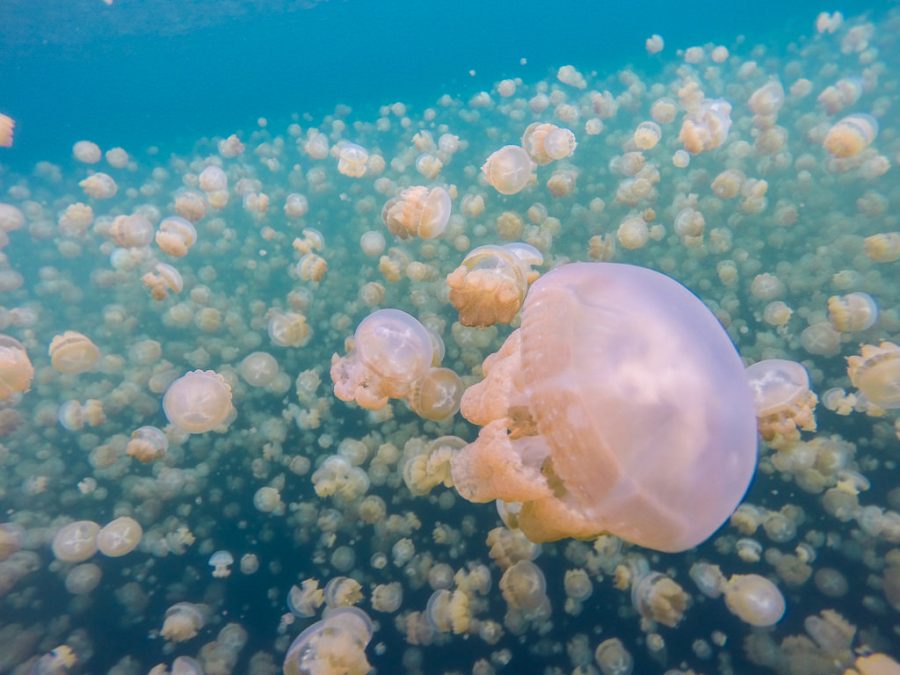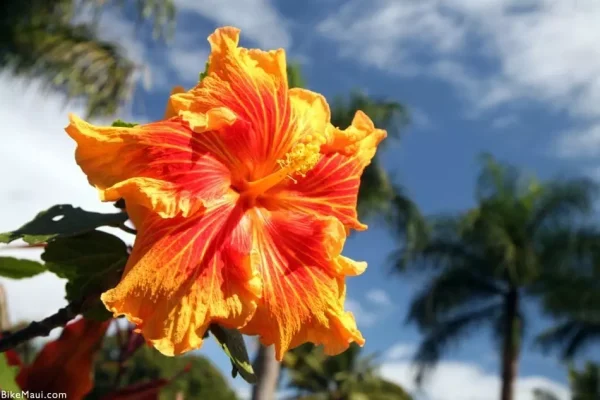Global warming causing disappearance of Palau’s golden jellyfish
The Golden Jellyfish making their daily trek across Jellyfish Lake to avoid anemones.
To find undisturbed nature outside of our lives is rare. Most of our world has already been explored. But Palau’s Jellyfish Lake looks as if it’s still in its primitive state and because of this, should be protected at all costs.
Palau is known for its stingless golden jellyfish. People on social media prioritize this island, located near Thailand, by making this another essential place to visit for those willing to capture the “perfect” Instagram photo.
Jellyfish Lake is one of 70 marine lakes located in Palau. Formed by depressions in limestone filled with salt water, these lakes originally connected to the nearby lagoon, but are now isolated from the sea. The majority of species confined to the lake did not survive due to the living condition of these saltwater lakes.
Those that survived are a different species of the stingless golden jellies that we see today. That is, until the park closed for El Niño (or Christ Child in Spanish) in 2015. The storm disrupted the normal weather patterns, bringing heavy rains and drought to parts of the world including Palau and its lakes. The jellyfish population went down in the tiny lake by the millions.
Jellyfish Lake is generally of particular interest. These jellyfish are not only a unique subspecies that have developed in isolation from their lagoon ancestors, but they also lie in a small body of seawater surrounded by land.
The millions of golden jellyfish spend much of their lives on the move in daily migrations that consist of following the sun’s arc across the sky.
Most scientists agree that the greenhouse gases we’ve put into the atmosphere have been caused by potential global warming.
Carbon dioxide’s ability to effect the transfer of infrared energy through the atmosphere is the scientific basis of many instruments flown by NASA.
“Scientific evidence for warming of the climate system is unequivocal” said the Intergovernmental Panel in response to climate change.
El Niño brought drastic changes to Koror, Palau. This typically occurs every two to seven years. El Niño impacted the equatorial Pacific by warming it, which was a contributing factor to an increase in the global temperature.
Global warming is still a concern. As our blue home has not yet had us suffer extreme measures caused by global warming, these jellies, as well as countless other species, have lived the consequences caused by humans.
Although in 1999 the Coral Reef Research Foundation noted a population crash, it rebounded eighteen months after, due to the survival of some polyps.
Now in 2015 to present day, we see yet another jellyfish wipeout.
Polyps, which produce jellyfish remained enough after 2015 to ensure a recovering population for the future, however as the jellyfish begin to repopulate, it won’t answer our solutions to reducing global warming.
Until global warming is no longer a concern, there are a few ways to reduce its destruction. Doing little things like planting a tree, turning off the lights, recycling, conserving water, carpooling, or using energy efficient light bulbs can go a long way in terms of helping the environment.







